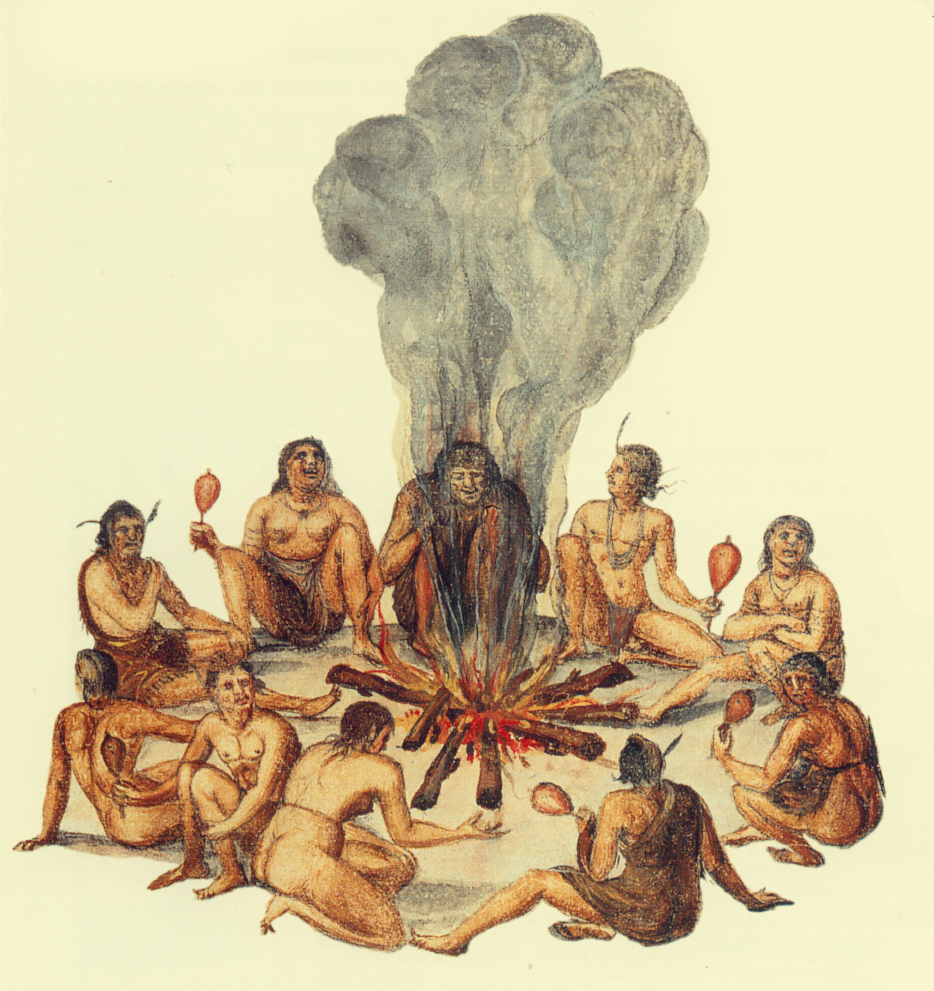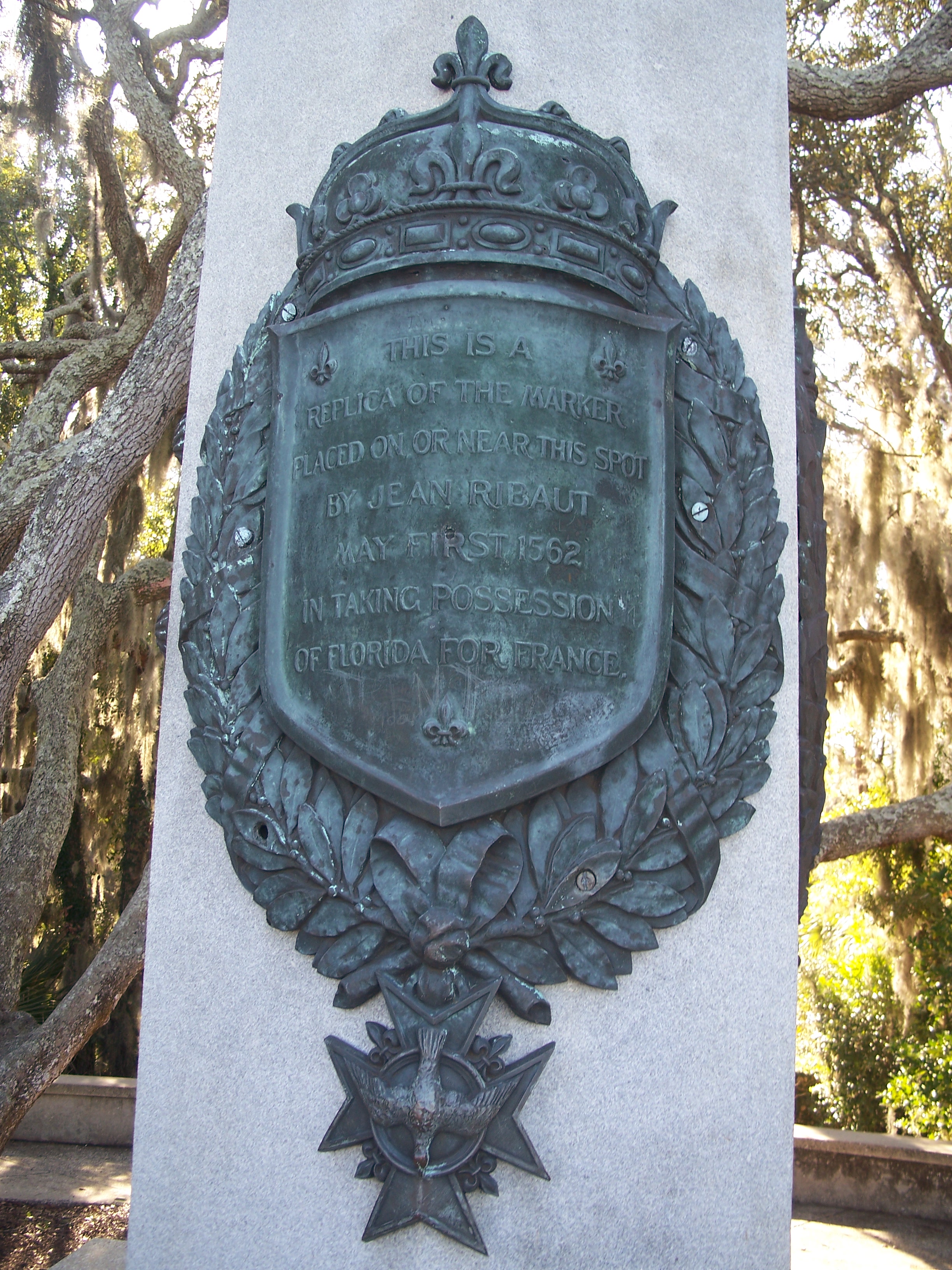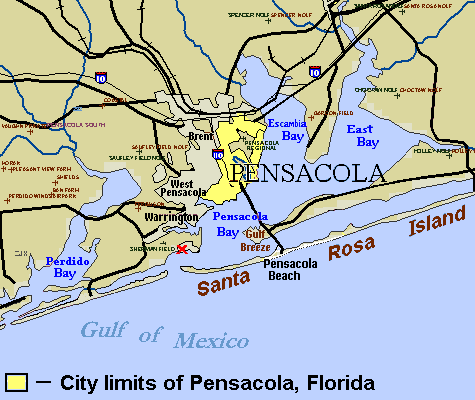|
Santa Elena (Spanish Florida)
Santa Elena, a Spanish settlement on what is now Parris Island, South Carolina, was the capital of Spanish Florida from 1566 to 1587. It was established under Pedro Menéndez de Avilés, the first governor of Spanish Florida. There had been a number of earlier attempts to establish colonies in the area by both the Spanish and the French, who had been inspired by the earlier accounts by Chicora and Hernando de Soto of rich territories in the interior. Menéndez's Santa Elena settlement was intended as the new capital of the Spanish colony of La Florida, shifting the focus of Spanish colonial efforts north from St. Augustine, which had been established in 1565 to oust the French from their colony of Fort Caroline. Santa Elena was ultimately built at the site of the abandoned French outpost of Charlesfort, founded in 1562 by Jean Ribault. In 1565 Menéndez destroyed the French Fort Caroline and then founded Santa Elena. This colony had a sizeable population, including missionaries ... [...More Info...] [...Related Items...] OR: [Wikipedia] [Google] [Baidu] |
Parris Island, South Carolina
Parris Island is a district of the city of Port Royal, South Carolina on an island of the same name. It became part of the city with the annexation of the Marine Corps Recruit Depot Parris Island on October 11, 2002. For statistical purposes, the United States Census Bureau previously defined Parris Island as a census-designated place (CDP) when it was an unincorporated area of Beaufort County. The population was 4,841 at the 2000 census. As defined by the U.S. Census Bureau, Parris Island is included within the Beaufort Urban Cluster and the larger Hilton Head Island– Beaufort Micropolitan Statistical Area. History Parris Island was first colonized by Europeans in 1562, when members of a French expedition led by Jean Ribaut temporarily settled on the island. This was the first semi-permanent European settlement in what are now considered the United States. Four years later, a town named Santa Elena was founded here by Spanish Conquistador Pedro Menéndez de Avil� ... [...More Info...] [...Related Items...] OR: [Wikipedia] [Google] [Baidu] |
Lucas Vázquez De Ayllón
Lucas Vázquez de Ayllón ( – 18 October 1526) was a Spanish magistrate and explorer who in 1526 established the short-lived San Miguel de Gualdape colony, one of the first European attempts at a settlement in what is now the United States. Ayllón's account of the region inspired a number of later attempts by the Spanish and French governments to colonize the southeastern United States. Early life and education Ayllón was born in Toledo around 1480, the younger son of a prominent family whose roots traced back to a high-ranking '' mozarab'' judge in Islamic Spain. His parents were city councilman Juan Vázquez de Ayllón and Inés de Villalobos. Ayllón received a good education in law and his father's position gave him valuable insights into the practice of politics. In Hispaniola In 1502, the Spanish Monarchs sent Nicolás de Ovando to serve as governor of Hispaniola in the Indies. Ayllón accompanied Ovando's flotilla and arrived at the capital, Santo Domingo, in Ap ... [...More Info...] [...Related Items...] OR: [Wikipedia] [Google] [Baidu] |
Chiaha
Chiaha was a Native American chiefdom located in the lower French Broad River valley in modern East Tennessee, in the southeastern United States. They lived in raised structures within boundaries of several stable villages. These overlooked the fields of maize, beans, squash, and tobacco, among other plants which they cultivated. Chiaha was at the northern extreme of the paramount Coosa chiefdom's sphere of influence in the 16th century when the Spanish expeditions of Hernando de Soto and Juan Pardo passed through the area. The Chiaha chiefdom included parts of modern Jefferson and Sevier counties, and may have extended westward into Knox, Blount and Monroe counties. The Spanish explorers' accounts of Chiaha provide a rare first-hand glimpse of life in a Dallas phase Mississippian-era village. The Dallas culture, named after Dallas Island near Chattanooga, where its distinct characteristics were first observed, dominated much of East Tennessee between approximately 1300 ... [...More Info...] [...Related Items...] OR: [Wikipedia] [Google] [Baidu] |
Fort San Juan (Joara)
Fort San Juan was a late 16th-century fort built by the Spanish under the command of conquistador Juan Pardo in the native village of Joara, in what is now Burke County, North Carolina. Used as an outpost for Pardo's expedition into the interior of what was known to the Spaniards as ''" la Florida"'', Fort San Juan was the foremost of six forts built and garrisoned by Pardo in modern-day North Carolina, South Carolina, and Tennessee to extend Spain's effective control deeper into the North American continent. Fort San Juan was the first European settlement in North Carolina and the interior of present-day United States, predating the earliest English settlement at Roanoke Island, North Carolina by 18 years. In 1568, natives from Joara and the region surrounding the fort razed this and the five other Spanish forts, killing all but one of the soldiers. After the fort's destruction, its exact location was lost. Archaeological work has been underway for years, revealing artifacts ... [...More Info...] [...Related Items...] OR: [Wikipedia] [Google] [Baidu] |
Morganton, North Carolina
Morganton is a city in and county seat of Burke County, North Carolina, United States. It is located in the foothills of the Blue Ridge Mountains along the Catawba River. The population was 17,474 at the 2020 census. Morganton is approximately northwest of Charlotte and 57 miles (92 km) east of Asheville. It is one of the principal cities in the Hickory-Lenoir-Morganton, NC Metropolitan Statistical Area. History An influx of European settlers over the Blue Ridge Mountains led Morganton to become the first chartered town in western North Carolina in 1784. On April 17, 1865 there was a small skirmish fought in Morganton, as part of Stoneman's 1865 raid through North Carolina. Public welfare facilities, such as the North Carolina School for the Deaf: Main Building and Western North Carolina Insane Asylum, were first authorized by the state legislature in the late 19th century. In the early 20th century, textile mills were developed in the Piedmont as industry left ... [...More Info...] [...Related Items...] OR: [Wikipedia] [Google] [Baidu] |
Mississippian Culture
The Mississippian culture was a collection of Native American societies that flourished in what is now the Midwestern, Eastern, and Southeastern United States from approximately 800 to 1600 CE, varying regionally. It was known for building large, earthen platform mounds, and often other shaped mounds as well. It was composed of a series of urban settlements and satellite villages linked together by loose trading networks. The largest city was Cahokia, believed to be a major religious center, located in what is present-day southern Illinois. The Mississippian way of life began to develop in the Mississippi River Valley (for which it is named). Cultures in the tributary Tennessee River Valley may have also begun to develop Mississippian characteristics at this point. Almost all dated Mississippian sites predate 1539–1540 (when Hernando de Soto explored the area), with notable exceptions being Natchez communities. These maintained Mississippian cultural practices into the 1 ... [...More Info...] [...Related Items...] OR: [Wikipedia] [Google] [Baidu] |
Joara
Joara was a large Native American settlement, a regional chiefdom of the Mississippian culture, located in what is now Burke County, North Carolina, about 300 miles from the Atlantic coast in the foothills of the Blue Ridge Mountains. Joara is notable as a significant archaeological and historic site, where Mississippian culture-era and European artifacts have been found, in addition to an earthwork platform mound and remains of a 16th-century Spanish fort. The first European encounters came in the mid-16th century. In 1540 the party of Spanish conquistador Hernando De Soto recorded visiting this place. A later expedition in 1567 under Juan Pardo, another Spanish explorer, founded the first European settlement in the interior of the continent, establishing Fort San Juan at this site, followed by other forts to the west. [...More Info...] [...Related Items...] OR: [Wikipedia] [Google] [Baidu] |
North Carolina
North Carolina ( ) is a U.S. state, state in the Southeastern United States, Southeastern region of the United States. It is bordered by Virginia to the north, the Atlantic Ocean to the east, South Carolina to the south, Georgia (U.S. state), Georgia to the southwest, and Tennessee to the west. The state is the List of U.S. states and territories by area, 28th-largest and List of U.S. states and territories by population, 9th-most populous of the List of states and territories of the United States, United States. Along with South Carolina, it makes up the Carolinas region of the East Coast of the United States, East Coast. At the 2020 United States census, 2020 census, the state had a population of 10,439,388. Raleigh, North Carolina, Raleigh is the state's List of capitals in the United States, capital and Charlotte, North Carolina, Charlotte is its List of municipalities in North Carolina, most populous and one of the fastest growing cities in the United States. The Charl ... [...More Info...] [...Related Items...] OR: [Wikipedia] [Google] [Baidu] |
Mexico
Mexico, officially the United Mexican States, is a country in North America. It is the northernmost country in Latin America, and borders the United States to the north, and Guatemala and Belize to the southeast; while having maritime boundary, maritime boundaries with the Pacific Ocean to the west, the Caribbean Sea to the southeast, and the Gulf of Mexico to the east. Mexico covers 1,972,550 km2 (761,610 sq mi), and is the List of countries by area, thirteenth-largest country in the world by land area. With a population exceeding 130 million, Mexico is the List of countries by population, tenth-most populous country in the world and is home to the Hispanophone#Countries, largest number of native Spanish speakers. Mexico City is the capital and List of cities in Mexico, largest city, which ranks among the List of cities by population, most populous metropolitan areas in the world. Human presence in Mexico dates back to at least 8,000 BC. Mesoamerica, considered a cradle ... [...More Info...] [...Related Items...] OR: [Wikipedia] [Google] [Baidu] |
René Goulaine De Laudonnière
Rene Goulaine de Laudonnière (; c. 1529–1574) was a French Huguenot explorer and the founder of the French colony of Fort Caroline in what is now Jacksonville, Florida. Admiral Gaspard de Coligny, a Huguenot, sent Jean Ribault and Laudonnière to explore potential sites in Florida suitable for settlement by the French Protestants. Biography Laudonnière was a Huguenot nobleman and merchant mariner from Poitou, France. His birthdate and family origins are currently unknown. One school of historians attaches him to a branch of the Goulaine family seated at Laudonnière, near Nantes. A competing claim insists that he was a Burdigale (or Bourdigalle) from the port town of Sables d'Olonne. No contemporary records have been published to substantiate either theory. In 1562, Laudonnière was appointed second in command of the Huguenot expedition to Florida under Jean Ribault. Leaving in February 1562, the expedition returned home in July after establishing the small settlement of ... [...More Info...] [...Related Items...] OR: [Wikipedia] [Google] [Baidu] |
Jacksonville, Florida
Jacksonville ( ) is the most populous city proper in the U.S. state of Florida, located on the Atlantic coast of North Florida, northeastern Florida. It is the county seat of Duval County, Florida, Duval County, with which the City of Jacksonville Jacksonville Consolidation, consolidated in 1968. It was the List of United States cities by area, largest city by area in the contiguous United States as of 2020, and became the 10th List of United States cities by population, largest U.S. city by population in 2023. Jacksonville straddles the St. Johns River in the First Coast region of northeastern Florida, about south of the Georgia state line ( to the urban core/downtown) and north of Miami. The Jacksonville Beaches communities are along the adjacent Atlantic coast. The area was originally inhabited by the Timucua people, and in 1564 was the site of the French colony of Fort Caroline, one of the earliest European settlements in what is now the continental United States. Under B ... [...More Info...] [...Related Items...] OR: [Wikipedia] [Google] [Baidu] |
Pensacola, Florida
Pensacola ( ) is a city in the Florida panhandle in the United States. It is the county seat and only incorporated city, city in Escambia County, Florida, Escambia County. The population was 54,312 at the 2020 United States census, 2020 census. It is the principal city of the Pensacola metropolitan area, which had 509,905 residents in the 2020 census. Pensacola was first settled by the Spanish Empire in 1559, antedating the establishment of St. Augustine, Florida, St. Augustine by six years, but was abandoned due to a significant hurricane and not resettled until 1698. Pensacola is a Port of Pensacola, seaport on Pensacola Bay, which is protected by the barrier island of Santa Rosa Island (Florida), Santa Rosa and connects to the Gulf of Mexico. A large Naval Air Station Pensacola, United States Naval Air Station, the first in the United States, is located in Pensacola. It is the base of the Blue Angels flight-demonstration team and the National Naval Aviation Museum. The Univers ... [...More Info...] [...Related Items...] OR: [Wikipedia] [Google] [Baidu] |





